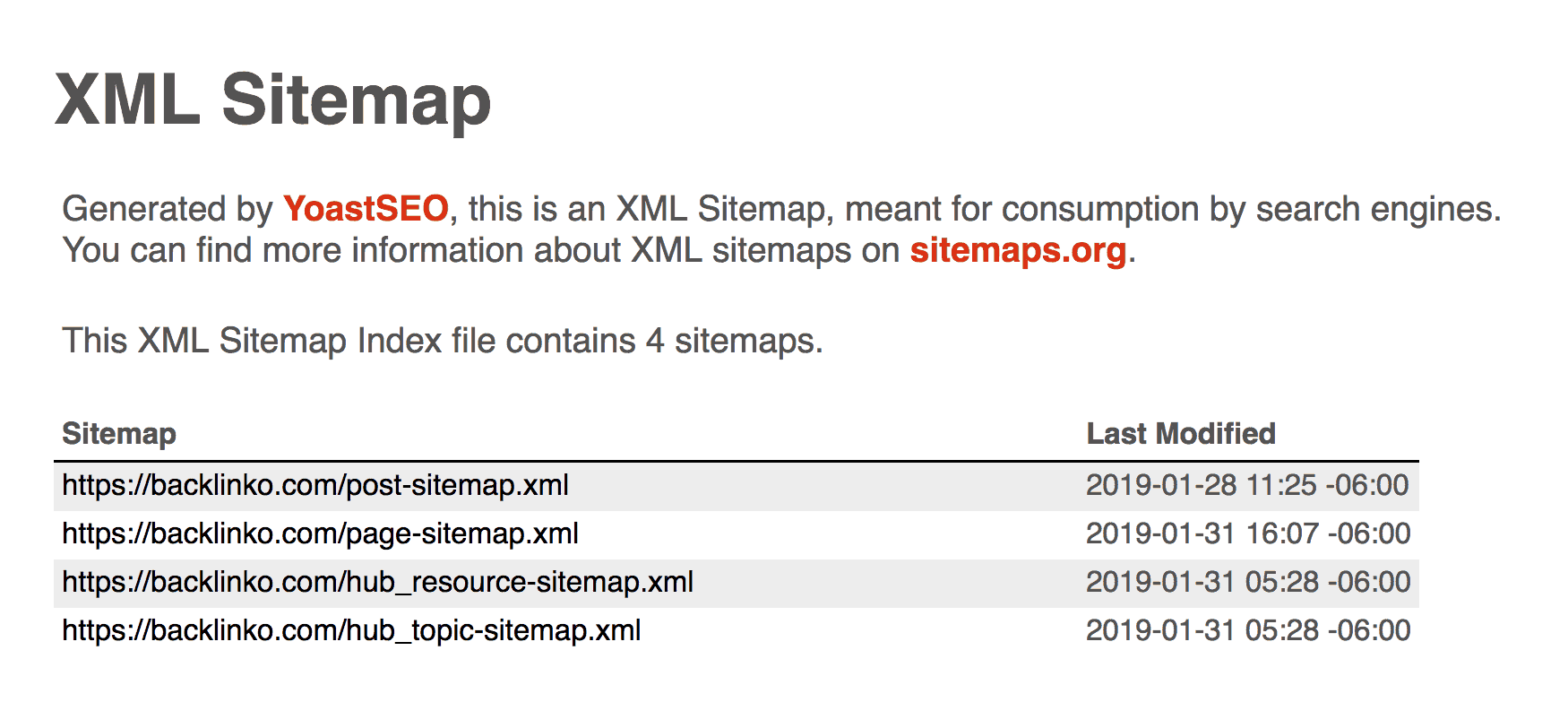What is an XML Sitemap?
Search engine optimization (SEO) is one of the most important components of a digital marketing strategy. Leading search engines like Bing and Google use extremely complex algorithms to deliver search results when a user types a keyword or phrase into the search box. Google’s algorithm uses more than 200 signals to rating the credibility and relevance of pages on your website before determining how they should rank on the search engine results pages. SEO is the process of optimizing your website and its content to be ranked more highly by search engines according to these complex and ever-changing algorithms.
An XML sitemap is an important component of your overall SEO strategy. XML sitemaps are documents or files that contain information about a website’s most important pages. Uploading an XML sitemap onto your web server helps search engines like Bing and Google discover your website and rank your pages on the search engines where they can be found by your target customers.
Google offers some guidance on what kinds of websites get the most benefit from having an XML site map, but in reality, every business that hopes to generate organic search traffic should have an XML sitemap uploaded to their web server.

Why is an XML Sitemap Important?
To understand the significance of an XML sitemap on your website, you need to understand a few things about how search engine companies like Google discover and rank websites on their search engine results pages.
Google’s value as a search engine comes from its ability to quickly connect users with the information, businesses, and content that they seek online. Google collects information about web pages and applies its algorithm to determine how web pages should rank for specific keywords, but a page cannot be ranked in Google’s search results before it has been indexed by Google. Indexing simply means that Google has looked at the website and added it to its database.
Of course, Google does not index websites by hand. With the huge volumes of content published on the internet each day, this would be impossible. Instead, Google programs virtual robots known as “crawlers” that index web pages automatically. Crawlers are scripted programs that read and copy content from the internet into Google’s databases so it can be indexed. Crawlers extract hyperlinks on each web page that they visit, then navigate to those links and continue to scour the internet for new pages to index.
This brings us back to XML sitemaps. An XML sitemap is a document or file that can be read by a crawler. It contains a list of all the URLs on your website, making it easy for Google to find and index every page of your site (even the ones that have no hyperlinks pointing to them). XML sitemaps also contain additional data that Google may use to assess whether you are the original author of some content, or how frequently your website is being updated.

What Websites Need an XML Sitemap?
Personal and business websites of all sizes can benefit from incorporating an XML sitemap which helps ensure that Google’s crawlers will index every page of the site. Google suggests four categories of websites where it is highly recommended to develop and upload an XML sitemap.
- Websites that are very large need an XML sitemap. The more pages you have, the more likely it is that Google web crawlers might miss crawling newly published or updated pages.
- Websites with a large archive of content can benefit significantly from an XML sitemap, especially if the archived content is isolated and not well-linked. Google crawlers can only find a page organically if it has hyperlinks from other pages pointing to it, but an XML sitemap can tell the crawler exactly which URLs on the website to the index for search engine ranking.
- Websites that are new may not have any external web pages that link to them. These websites would be impossible for Google crawlers to find organically. If your website is new, you can submit your XML sitemap directly to leading search engine companies like Google and Bing to help you get indexed more quickly so your customers can start finding you.
- Websites with rich media content can construct an XML sitemap with an image or video entries. A video entry can supply additional information to Google crawlers, such as video category, running time and age rating. An image entry may include data such as the image subject, type, and creative license.

What Information is in an XML Sitemap?
An XML sitemap can be published in either the XML format or in plain text. Most XML files that are computer-generated will be published in XML format. Regardless of the format, you’ll have the same options and requirements for what information to include about each URL in your sitemap:
Location
In the XML language, the tag is used to reference the location of a specific URL on your website. The URL should begin with the protocol, end with a trailing slash (if required by your web server) and must be less than 2,048 characters in length.
Last Modification
Your XML sitemap can optionally include the date of last modification for any or all of the pages on your website. Google crawlers may use information from here to determine whether you are the original author if your content is duplicated elsewhere on the web. Dates here are typically written in the W3C Datetime format of YYYY-MM-DD.
Change Frequency
Your XML sitemap can indicate to Google crawlers the frequency with which you expect a given page to change. This can give crawlers a hint as to how frequently they should crawl your pages to detect new changes. In the XML format, change frequency is referenced by the tag. Valid values include:
- Never
- Yearly
- Monthly
- Weekly
- Daily
- Hourly
- Always
Priority
Priority is the final optional data point that you can include in your XML sitemap. Priority values range from 0.0 to 1.0 with a default value of 0.5. Page priority is your own relative measure of how important a specific page is on your web site. It can help search engines determine which of your pages should appear on search engine rankings if multiple pages rank highly for the same keywords.

Directive Consulting’s Technical SEO Audit Optimizes Your XML Sitemap
The first and most important aspect of B2B search engine optimization is performing a technical SEO audit. Technical SEO audits to verify that your web site is technically optimized for SEO, including everything from duplicate content analysis to proper use of 301 redirects, fixing broken links, optimizing the linking structure, improving site speed and more.
XML sitemaps are also an important item to review for a technical SEO audit. Improving your XML sitemap, adding more information, prioritizing key pages, ensuring the file executes properly and submitting your XML sitemap to Google can help get more of your pages indexed and boost your rankings in the search results.
Want to learn more about how Directive Consulting can help improve your XML sitemaps for SEO? Get a free proposal now!